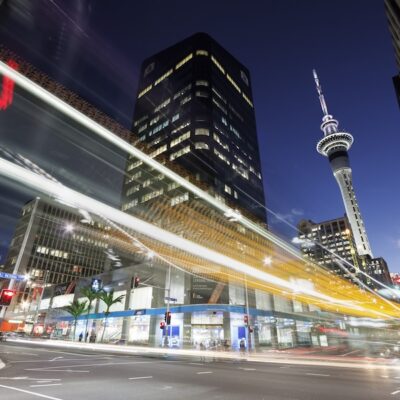Rhythm and Vines challenges prevailing trends
One of NZ’s original festivals is being revitalised to ensure long term sustainability. Rhythm and Vines pumps $12 million a year into the country’s most economically disadvantaged region.
3.7K
Rhythm and Vines has challenged trends, traditions and expectations since it was established at the Waiohika Estate just outside Gisborne in 2003.
This year several high profile festivals have been cancelled across the country, and Gisborne now ranks at the bottom of most economic performance indicators. These factors have only encouraged festival founder Hamish Pinkham and his team to re-scope and revitalise R&V. “We’ve created a safe, sustainable model that we hope will continue to perform for the next dozen years and beyond,” explains Pinkham. “We’ve taken R&V back to its roots.”
The refreshed R&V has broader appeal than ever, with a wider mix of musical genres, new “Giggle & Vines” comedy showcase, and a craft beer garden. It’s expected to draw 15,000 people to Gisborne, and generate a further $12 million for the local economy.
“The real economic impact in the Gisborne region is likely to be around $40 million, once you calculate the dollar being spent three times in the region,” says Pinkham. “We’ll employ up to 800 people when the festival is in full swing. There’s a great pool of talented people in Gisborne, and over the last few years we’ve focused on sourcing as many staff from the region as possible. Additionally, thirty of our major suppliers are Gisborne companies.”
“R&V is vitally important to this district, both for the short term economic boost, but also the long term tourism and business potential,” says Steve Breen, CEO of regional economic development agency Activate Tair?whiti. “R&V showcases the best of Gisborne to thousands of people each year – it’s for the region to attract them back, whether it’s as tourists, or to invest or live here. The true value that R&V delivers is immense.”
Out of the 15,000 people who are expected at R&V this year, Pinkham estimates as few as 5-10% will be locals. “Previous years’ stats suggest around 90% live elsewhere in New Zealand and overseas. Our ticket sales figures show that 51% of ticket purchases come from Auckland, 11% from Wellington, 8% from Waikato and 9% of ticket sales are from overseas. Two thousand VIP Vintage Club tickets will go to a slightly older, discerning crowd with higher disposable income.”
The region’s tourism body, Tourism Eastland, is one of the many longtime local supporters of R&V. “This event is the start of the busiest time of year for our visitor sector,” comments Tourism Eastland CEO Stuart Perry. “We support R&V in particular because of the organisers’ excellent track record over many years, and the event brings in thousands of people to the businesses in town.”
Pinkham adds that the location of the festival is an integral part of what makes it so unique, and so popular year after year. “The beaches and vineyards, the friendliness of the locals, the fact that it’s first to see the sun, all combine to create a special atmosphere. New Zealanders who wouldn’t otherwise come to Gisborne not only visit, they take away lifelong memories of the place and many end up returning.”






